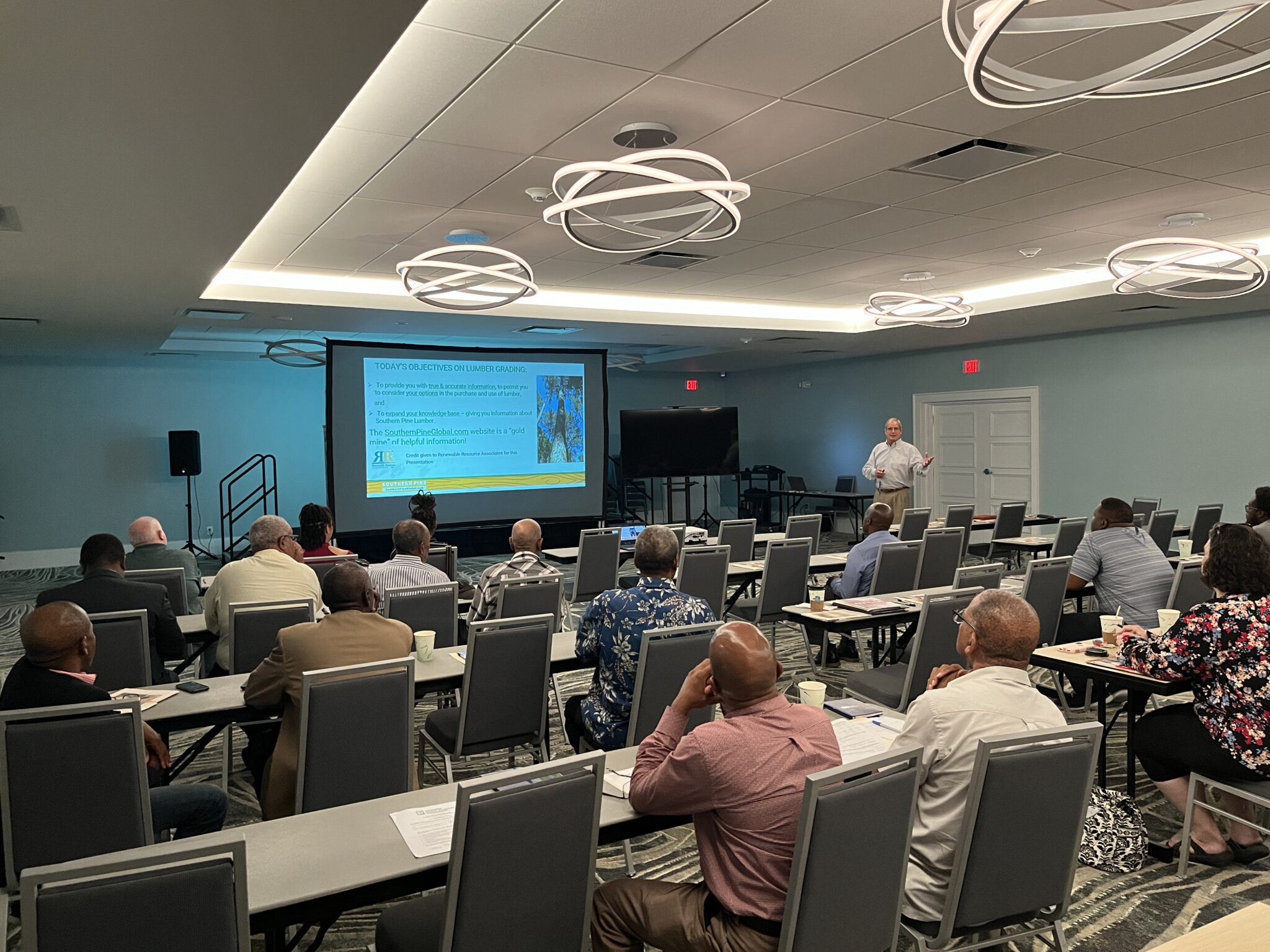Seminars in The Bahamas and the Cayman Islands from September 3-8 led by two Southern Forest Products Association international consultants provided insights into the current landscape of the wood industry, shed light on existing challenges, and uncovered potential avenues for collaboration with the SFPA on Southern Pine in the Caribbean.
Jerry Hingle, president and CEO of International Trade Associates, and Kerlin Drake, president of Kerlin Drake Consulting, discussed all-things Southern Pine, from wood grades to the strategic selection of pressure-treated wood, and best practices in construction. Candice Bruce, director of the Caribbean Basin Agricultural Trade Office, also delivered opening remarks for the seminar in the Cayman Islands.
The face-to-face seminars attracted 58 participants between the two countries, with a large representation of architects, contractors, wholesalers, and importers in The Bahamas and architects, inspectors, and retailers in the Cayman Islands.
Participants provided the following feedback on topics they’d like to learn about in future seminars, which provides further insight into how SFPA and its partners can grow the Southern Pine market on these Caribbean islands:
- Types of treated wood; which pressure-treated wood is suitable for specific uses
- Market effects on pricing and availability
- Termite resistance properties
- Load path and connectors
- Truss detailing and design
- Use of Southern Yellow Pine as construction materials
- Methods for enhancing termite resistance
- Architectural design (specializing in small commercial and residential projects)
- Forestry unit responsible for all forestry matters in The Bahamas, covering timber and non-timber forest products
- Forest management
- Extensive use of Southern Pine in most projects
- Residential and commercial construction
